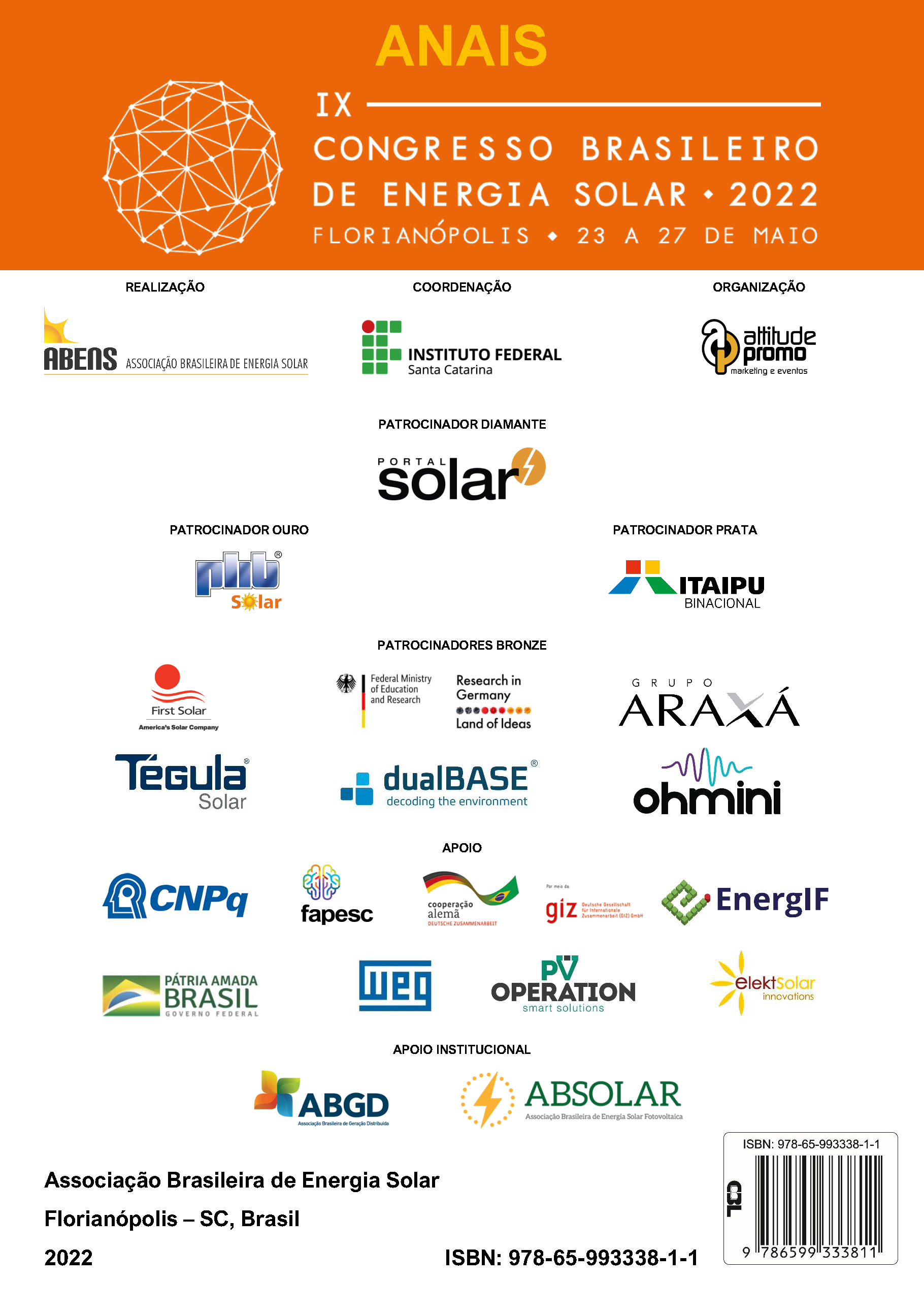TECHNICAL COMPARISON BETWEEN FIRST AND SECOND LIFE BATTERY BANKS FOR COMMERCIAL-SIZE ON-GRID APPLICATION
DOI:
https://doi.org/10.59627/cbens.2022.1223Keywords:
Energy Storage, Electric Vehicles, Second Life BatteryAbstract
Electric vehicles are an alternative technology for reducing emissions into the atmosphere, when combined with the generation of energy from renewable sources. However, after a few years of use, the batteries lose some of their original capacity and need to be replaced. Recent studies and applications point to the feasibility of reusing these batteries after being removed from electric vehicles, an application known as second battery life. This work presents the application of second life batteries from Nissan LEAF vehicles for use in a commercial battery bank (100kWh) and comparison with a first life bank of the same size installed in the same environment and subjected to the same conditions. The capacity measurement of the two banks was carried out through loading and unloading tests which showed that both were reduced, due to the losses inherent to the system, such as auxiliary loads and internal consumption of the equipment. The real capacity in relation to the nominal capacity of the second life bank, as expected, was lower than that of the first life, due to factors such as the maximum and minimum operating voltage limitation of the bank by the Power Conversion System (PCS), the increase in internal resistance of cells, unbalance between cells, increase in temperature, among others. The use of second life batteries for this type of application proved to be technically feasible, but it presents challenges such as the lack of compatible electronic control systems in the market and the need to characterize the modules for the use of batteries with different background in the same system.
Downloads
References
AESC. 2018. “Cell, Module, and Pack for EV Applications.” http://www.eco-aesc-lb.com:80/en/product/liion_ev/%0D.
Ahmadi, Leila, Steven B. Young, Michael Fowler, Roydon A. Fraser, and Mohammad Ahmadi Achachlouei. 2017. “A Cascaded Life Cycle: Reuse of Electric Vehicle Lithium-Ion Battery Packs in Energy Storage Systems.” International Journal of Life Cycle Assessment 22 (1): 111–124. doi:10.1007/s11367-015-0959-7.
Assunção, André, Pedro S. Moura, and Aníbal T. de Almeida. 2016. “Technical and Economic Assessment of the Secondary Use of Repurposed Electric Vehicle Batteries in the Residential Sector to Support Solar Energy.” Applied Energy 181: 120–131. doi:10.1016/j.apenergy.2016.08.056.
Campos, Rafael Antunes, Marilia Braga, Lucas Nascimento, Ricardo Ruther, and Gabriel Simoes. 2019. “The Role of Second Life Li-Ion Batteries in Avoiding Generation Curtailment in Utility-Scale Wind + Solar Parks in Brazil.” Conference Record of the IEEE Photovoltaic Specialists Conference, no. April 2020: 2078–2081. doi:10.1109/PVSC40753.2019.8980869.
de Oliveira, Aline Kirsten Vidal, Amanda Mendes Ferreira Gomes, Vitor Volpato Goulart, Alexandre de Albuquerque Montenegro, and Ricardo Rüther. 2020. “Analysis of the Integration of an Electric Bus and an Electric Vehicle with Grid-Connected PV Systems and a Storage System.” Proceedings of the ISES Solar World Congress 2019 and IEA SHC International Conference on Solar Heating and Cooling for Buildings and Industry 2019, 1574–1581. doi:10.18086/swc.2019.31.02.
Electric Power Research Institute (EPRI). 2019. “Energy Storage Integration Council (ESIC) Energy Storage Test Manual.” https://www.epri.com/research/products/000000003002013530.
Kim, Jonghoon, and B. H. Cho. 2013. “Screening Process-Based Modeling of the Multi-Cell Battery String in Series and Parallel Connections for High Accuracy State-of-Charge Estimation.” Energy 57. Elsevier Ltd: 581–599. doi:10.1016/j.energy.2013.04.050.
Mirzaei Omrani, Mahyar, and Hamid Jannesari. 2019. “Economic and Environmental Assessment of Reusing Electric Vehicle Lithium-Ion Batteries for Load Leveling in the Residential, Industrial and Photovoltaic Power Plants Sectors.” Renewable and Sustainable Energy Reviews 116. doi:10.1016/j.rser.2019.109413.
Narayan, Nishant, Thekla Papakosta, Victor Vega-Garita, Zian Qin, Jelena Popovic-Gerber, Pavol Bauer, and Miroslav Zeman. 2018. “Estimating Battery Lifetimes in Solar Home System Design Using a Practical Modelling Methodology.” Applied Energy 228 (July). Elsevier: 1629–1639. doi:10.1016/j.apenergy.2018.06.152.


